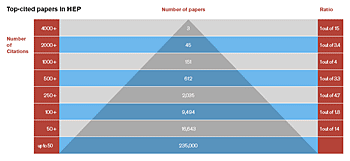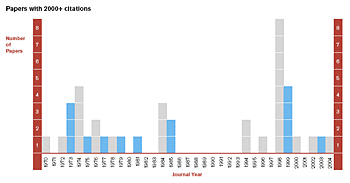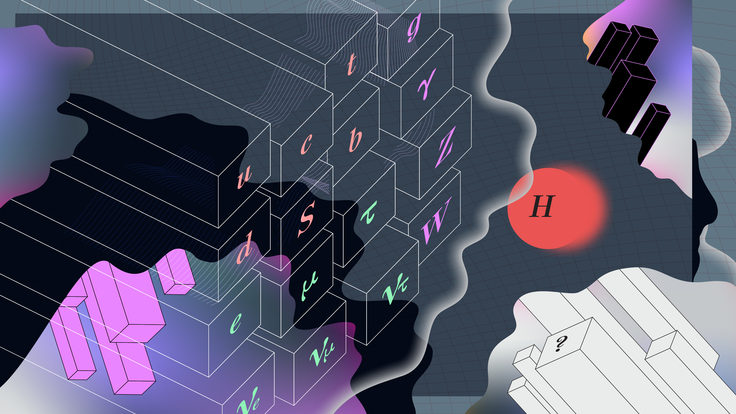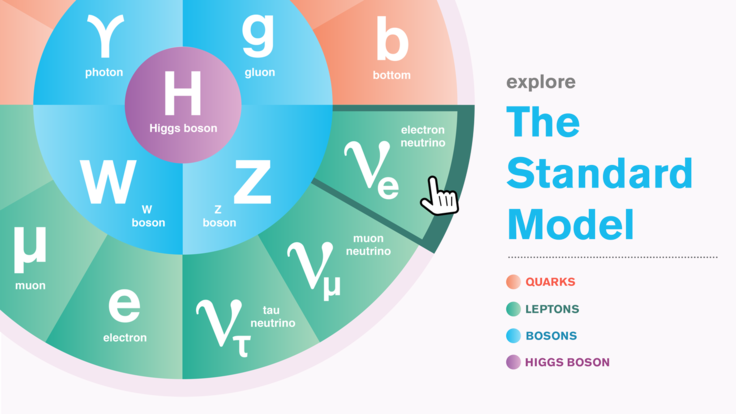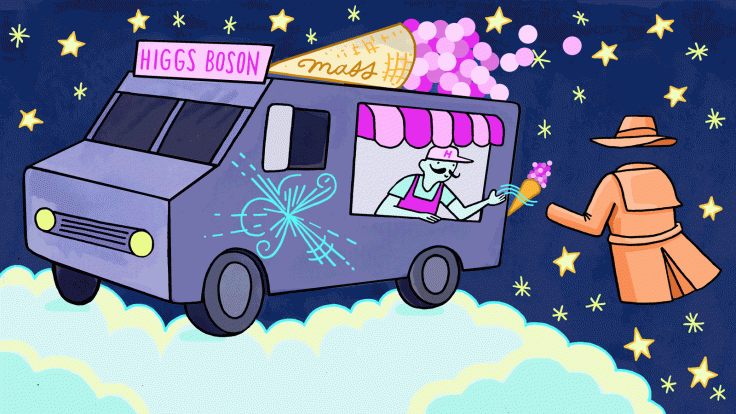Big jump needed to be top-cited
In the realm of the top-cited papers in particle physics, life is indeed lonely at the top. Since 1951, only 45 particle physics research papers have climbed to the level of 2000 or more citations; and of those 45, only three—for a ratio of one in 15—have reached the pinnacle of 4000 or more citations.
In fact, that last part of the climb is the hardest of all. The second-hardest step is getting the first 50 citations. The SPIRES database lists some 235,000 papers that have received fewer than 50 citations; only 16,643 crossed the threshold of 50, a ratio of one in 14. The ascent from 50 to 2000 was a relatively easy climb, with the ratio ranging from 1 in 1.8 (50+ to 100+) to 1 in 4.7 (250+ to 500+).
The three most highly-cited papers are Steven Weinberg's 1967 "Model of Leptons" (Phys. Rev. Lett. 19 1264 (1967), 4602 citations); Makoto Kobayashi and Toshihide Maskawa's 1973 "CP-Violation in the Renormalizable Theory of Weak Interaction" (Prog. Theor. Phys., Vol. 49 No. 2 (1973), 2792 citations); and Juan Maldacena's "Large N Limit of Superconformal Field Theories and Supergravity" (Adv. Theor. Math. Phys. 2 231-252 (1998), 4064 citations), which received all of its citations in less than 8 years.
Peak publication periods for papers in the 2000+ range are 1998–99, with 12; and 1973–74, with seven. In 1998–99, the 12 papers span a wide range of interests, from theoretical papers on strings and extra dimensions (small and large), to experimental papers on cos-mology and neutrino oscillations. The 1973–74 period featured all seven top-cited papers on theory papers of the electroweak and strong interactions, which laid the groundwork for the Standard Model.
Heath O'Connell, Fermilab
Click here to download the pdf version of this article.



